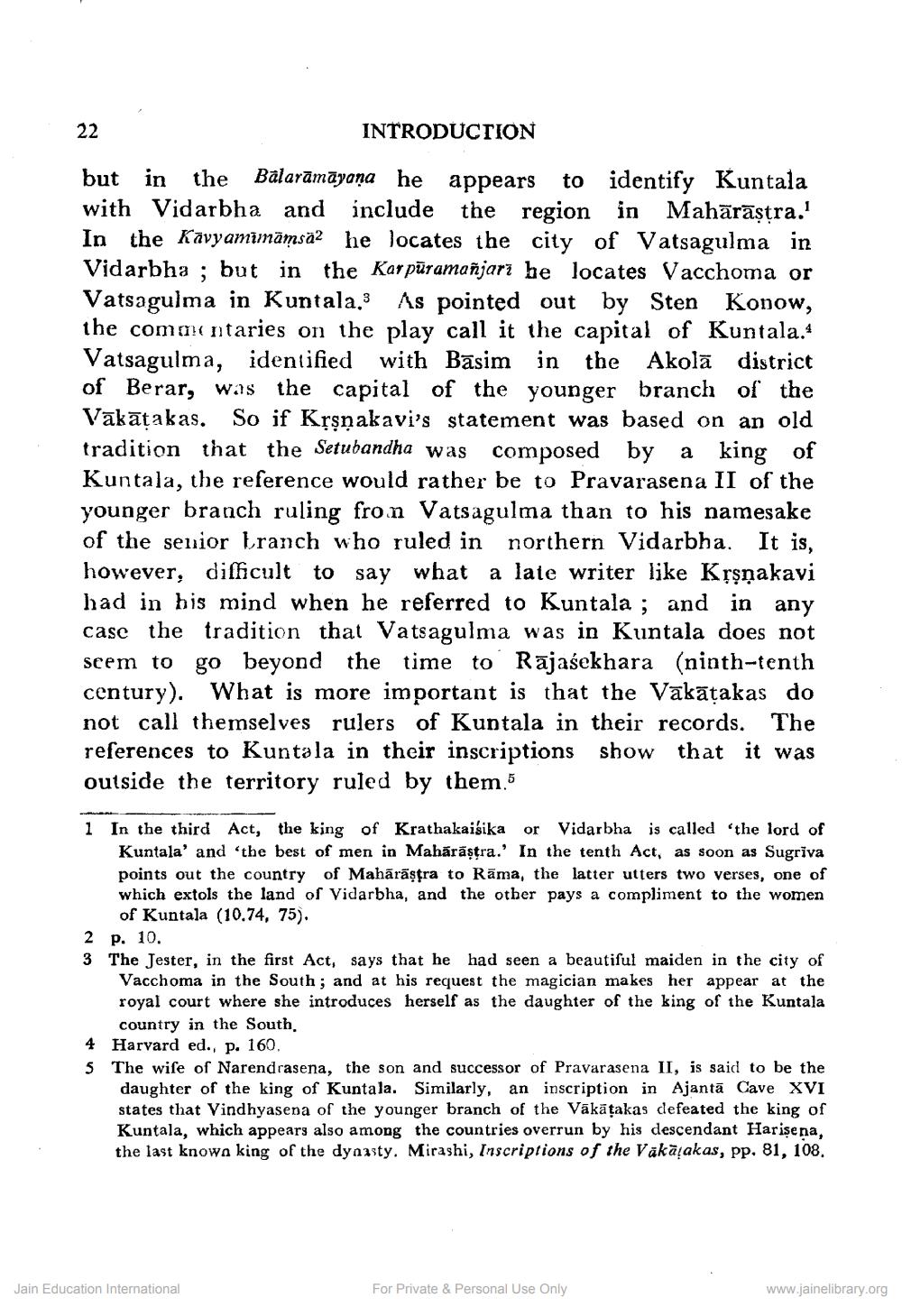________________
22
INTRODUCTION
but in the Balaramayana he appears to identify Kuntala with Vidarbha and include the region in Maharaṣṭra.' In the Kavyamimämsä2 he locates the city of Vatsagulma in Vidarbha; but in the Karpuramañjarī he locates Vacchoma or Vatsagulma in Kuntala,3 As pointed out by Sten Konow, the commentaries on the play call it the capital of Kuntala.* Vatsagulma, identified with Basim in the Akola district of Berar, was the capital of the younger branch of the Vākāṭakas. So if Kṛṣṇakavi's statement was based on an old tradition that the Setubandha was composed by a king of
Kuntala, the reference would rather be to Pravarasena II of the younger branch ruling from Vatsagulma than to his namesake of the senior Lranch who ruled in northern Vidarbha. It is, however, difficult to say what a late writer like Kṛṣṇakavi had in his mind when he referred to Kuntala; and in any case the tradition that Vatsagulma was in Kuntala does not seem to go beyond the time to Rajasekhara (ninth-tenth century). What is more important is that the Vakāṭakas do not call themselves rulers of Kuntala in their records. The references to Kuntala in their inscriptions show that it was outside the territory ruled by them.5
1 In the third Act, the king of Krathakaisika or Vidarbha is called 'the lord of Kuntala' and 'the best of men in Mahārāṣṭra.' In the tenth Act, as soon as Sugrīva points out the country of Mahārāṣtra to Rama, the latter utters two verses, one of which extols the land of Vidarbha, and the other pays a compliment to the women of Kuntala (10.74, 75).
2 p. 10.
3 The Jester, in the first Act, says that he had seen a beautiful maiden in the city of Vacchoma in the South; and at his request the magician makes her appear at the royal court where she introduces herself as the daughter of the king of the Kuntala country in the South.
4 Harvard ed., p. 160.
5 The wife of Narendrasena, the son and successor of Pravarasena II, is said to be the daughter of the king of Kuntala. Similarly, an inscription in Ajanta Cave XVI states that Vindhyasena of the younger branch of the Vākāṭakas defeated the king of Kuntala, which appears also among the countries overrun by his descendant Hariṣena, the last known king of the dynasty. Mirashi, Inscriptions of the Vakatakas, pp. 81, 108.
Jain Education International
For Private & Personal Use Only
www.jainelibrary.org




